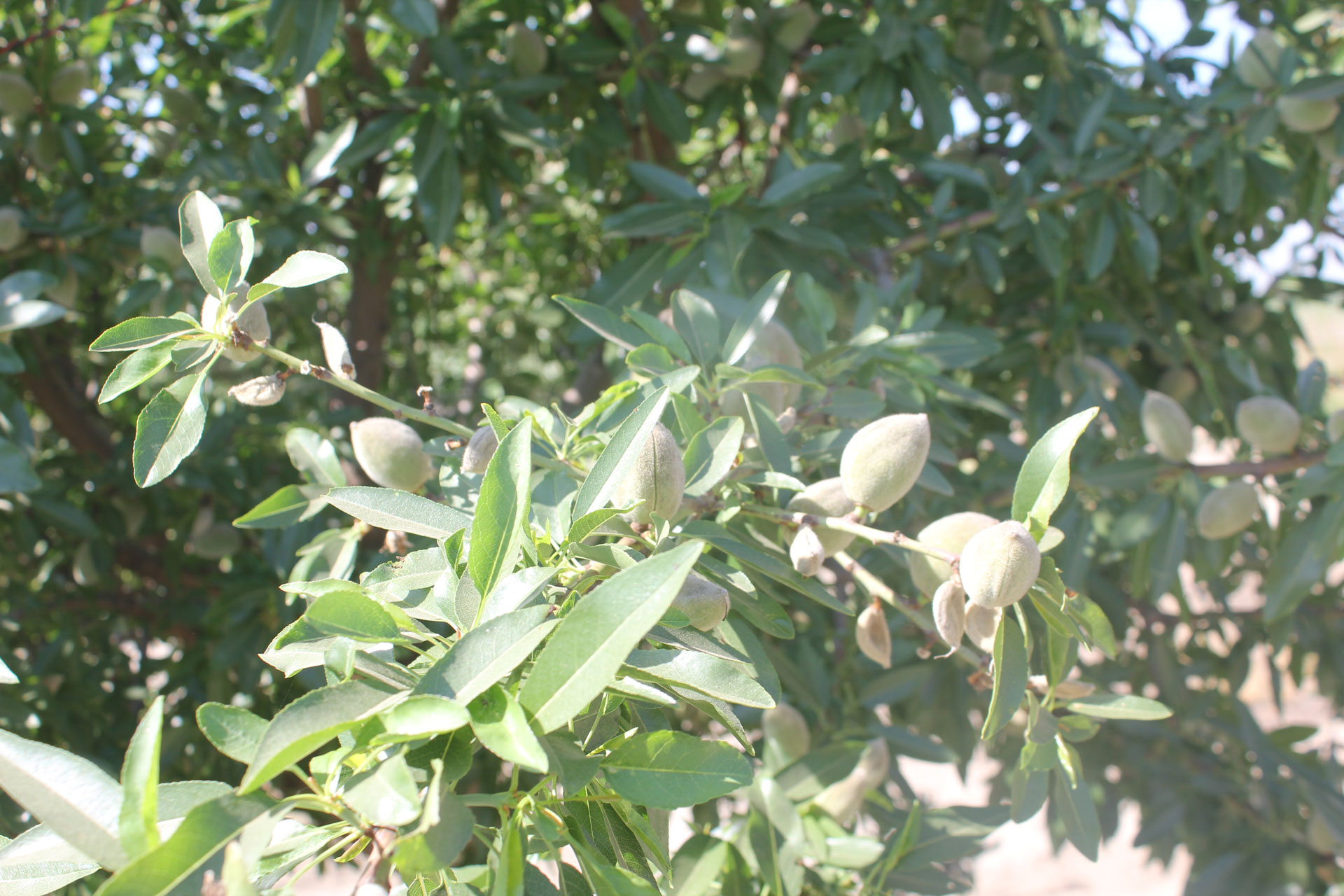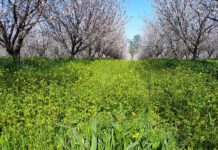Nitrogen is 78% of the air we breathe. 78%!? Yet we have to pour the N to our crops to get them to perform at optimal levels because we are told they can’t find a way to use it themselves. Right? So, what happens when N prices double? It’s damn near as debilitating as California West Side surface water costing $2000 an acre-foot or more! The Midwest would be losing their minds if they knew what we pay to farm here in California, but of course, they have their own set of problems. One of which is certainly the price of N. With almost 1 billion acres of farmland in the U.S., the nitrogen problem and unprecedented rise in all input costs has to be considered to farm in 2022.
Estimating Yield
When we make our input calculations for our farms this time of year, we have to consider our expected yields. The UC has a fluid range of nitrogen used to grow 1,000 pounds of almonds at about 65 units today. Of course, we all are hopefully optimistic that we will hit that golden number of 4,000 pounds of almonds, or 8,000 pounds of pistachios, or four tons of walnuts.
When we assess the crop potential in the spring, many times we realize our final numbers will be less than optimal. Here in lies the rub. Nitrogen and phosphorus levels start high in the spring and taper in our tissues throughout the season. We have to be right early, yet we waste much of what we apply later in the spring if our yields aren’t what was predicted in our planning. How do we make our nitrogen applications more efficient and timely?
The Western Region’s CCA of the Year, Keith Backman, was recently speaking at the Crop Consultant Conference in Visalia, Calif. this fall. He again reiterated his immense lab experience and observations from years of dedicated service to us farmers. He noted that typically, a tree will only be able to assimilate 10 units of nitrogen per week.
Let’s say we plan on making a 3000-pound almond crop. At 65 units per 1000 pounds, and assuming a 70% use efficiency, that puts us around 250 units needed to grow that big of a crop and keep the trees growing. What farmers for years have taken that to mean is applying 50 units every month from March to July. But how effective is that? And what about the other nutrients? We typically need as much calcium as we do nitrogen. We aren’t getting that from just applying CAN-17. That would only be half of the calcium demand. If it were only 70% efficient, we’d need to apply 33 units of phosphorus to get to the proper number in our tissues. If magnesium needs to be about 20% of your nitrogen number in the tissues, your trees would have to consume 55 units of Mg in a season. How often do we even come close to applying that much Mg?! (And wait until the magnesium shortage hits harder with all the alloys used to make electric cars… but I digress.)
Planning and Preparation
“So, what are you saying, Rich?”
We have to get better at our preparation, calculation, application and assimilation. I have a client, Norma in Madera, who is a bad-ass farmer. She and her late husband have farmed in Madera for decades, and on her own, she has been one of the most adaptive and forward-thinking farmers I know. From cover crops, to mulching, to intensive irrigation management, and very diligent nutrient management, she was able to harvest well over 3,000 pounds of nuts per acre (again) on less than 30 units of in-season applied nitrogen.
The sheer tons of green manure that is produced from her cover crops gets mowed and deposited out of the centers on the crotch of the berms. By the time she harvests, it’s decomposed to organic matter, into the soil and doesn’t affect her sweeping. And that’s a very stable and sustainable future N release.
Her water management practices keep nutrients in the root zone without leaching. She does lots of smaller shots instead of one big one per week, and the same for her inputs. The amount of microbiology that has increased over the years ensures more nutrients get solubilized and assimilated into her crops. And it’s all brought up on rain water in the winter so well or any surface water is not used to grow it. It’s taken some work, but her soil biome and farming system is very efficient.
Improving the Soil
Am I suggesting a farmer cut his applied N next year to 30 units from 250? Absolutely not! But let’s say we apply two tons per acre of a stable, well cured compost to our fields this winter. We plant a cover crop that rain brings up. All in, we are probably, with the cost of diesel today, under $150/ac. If that translates into a much more efficient and stable soil biome, saving us nitrogen applications, P, K, Ca, Mg and S inputs as well as water efficiency, how much are we talking about? Let’s take 80 gallons per acre of UAN-32 down to 50 gallons. At $4 to $5/gallon, we should be saving $200/ac at least! And that’s just nitrogen. What if all the other nutrients, phosphorus and calcium in particular, become more efficient? What if we can now save half an acre-foot of water per acre? On the westside, that could be another couple $100 or more depending on where you are and how much you need to buy. Let’s take that to another level. Let’s say you are in a white area like I am and may be limited to pumping less than an acre foot of water per year in the future. A 1% increase in organic matter holds 20,000 more gallons of water per acre in the root zone! Being that efficient with water may be the difference between farming or not.
The government is forcing us to be more efficient (again) with water and inputs. The more hands-on we become, the more efficient we become, may actually buy us enough time to outlast the idiocracy of our current state and federal government. Changing our inputs from a 50-unit slug to (four) 10-unit shots will not only save us money but hopefully ensure more absorption. Balancing all the other essential nutrients should dramatically enhance the assimilation of each. Letting Mother Nature do some of the heavy lifting with rain water can help shoulder the load we are carrying.
















